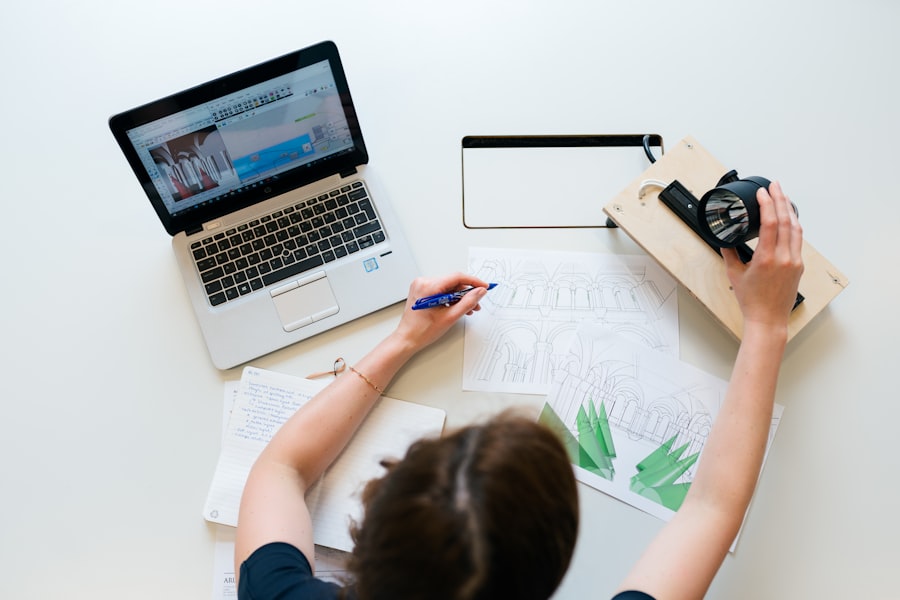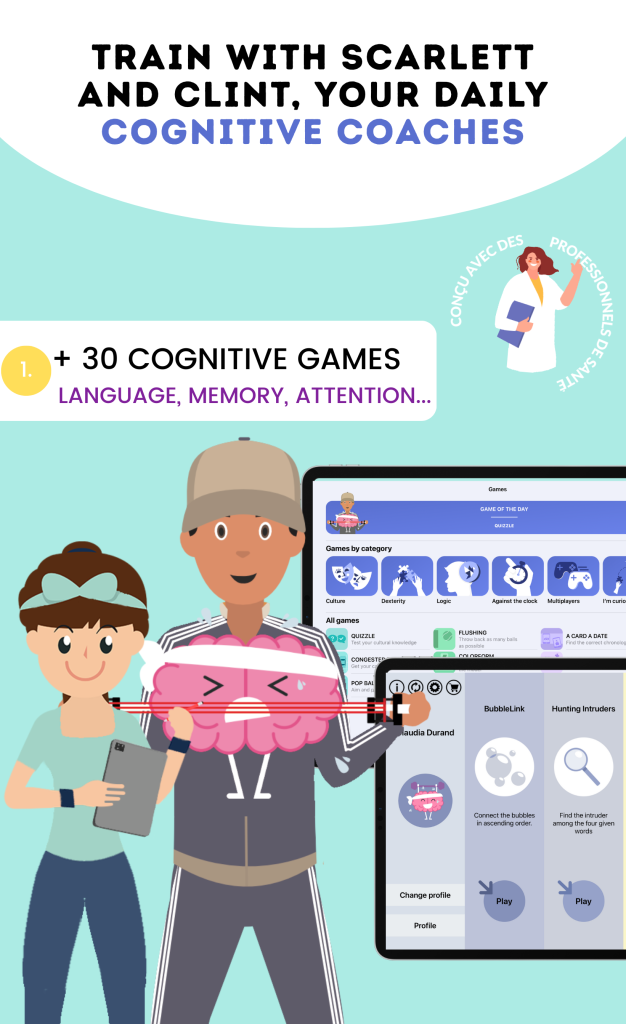Digital technologies have revolutionized many aspects of our daily lives, including the field of personal assistance. Nowadays, there are a multitude of digital technologies that can help individuals needing personal assistance improve their quality of life and gain autonomy. Whether through stimulating video games, practical mobile applications, or assistive robots, these technologies offer new possibilities for elderly people, disabled individuals, and their caregivers. In this article, we will explore various uses of digital technologies in the field of personal assistance and discuss future prospects.
Digital Technologies for Personal Assistance
Digital technologies are used in various ways to assist individuals needing personal assistance. For example, they can be used to stimulate individuals’ cognitive abilities. Video games are a popular tool for cognitive stimulation, as they allow users to exercise their memory, attention, and problem-solving skills. Games specifically designed for elderly people or those with cognitive disorders, such as Alzheimer’s’s disease, are available on the market and can be used for both therapeutic and recreational purposes.
Moreover, mobile applications are also very useful in the daily lives of caregivers. They can help organize daily tasks, track medications, and communicate with healthcare professionals. For example, there are applications that allow caregivers to create task lists, schedule medication reminders, and share information with other family members or healthcare professionals. These applications facilitate daily management and allow caregivers to focus more on the well-being of their loved ones.
Video Games as a Tool for Cognitive Stimulation
Video games can be used as a tool for cognitive stimulation for individuals needing personal assistance. They offer an interactive and engaging experience that can help improve cognitive abilities such as memory, attention, and problem-solving. For example, games specifically designed for elderly people can help maintain their memory and concentration. These games may include memory exercises, puzzles, and cognitive challenges that help keep the mind active.
A popular example of a video game used for cognitive stimulation is “Brain Age” on the Nintendo DS console. This game offers a series of brain exercises designed to improve cognitive abilities. Players can train daily with exercises such as math calculations, memory exercises, and puzzles. Studies have shown that regular use of this game can help improve cognitive performance in elderly people.
Mobile Applications for the Daily Lives of Caregivers
Mobile applications are a valuable tool for facilitating the daily lives of caregivers. They offer a multitude of practical features that can help organize tasks, track medications, and communicate with healthcare professionals. For example, there are applications that allow caregivers to create task lists and schedule medication reminders. These applications send notifications to caregivers to remind them of tasks to be completed and medications to be taken. They can also allow caregivers to share information with other family members or healthcare professionals, facilitating care coordination.
A popular application for caregivers is “CareZone.” This application allows caregivers to create profiles for their loved ones and manage all aspects of their care. Caregivers can organize medical appointments, track medications, record symptoms, and share information with other family members or healthcare professionals. The application also provides a space to store important documents such as prescriptions and medical test results.
Assistive Robots for Elderly and Disabled Individuals
Assistive robots are another form of digital technology used in the field of personal assistance. They are designed to help elderly and disabled individuals with their daily tasks and to provide companionship. These robots can perform tasks such as meal preparation, cleaning, mobility assistance, and health monitoring. They can also offer social interaction by engaging in conversations and playing games with users.
A popular example of an assistive robot is “Pepper” from SoftBank Robotics. This robot is designed to provide companionship to elderly people and assist them with their daily tasks. It can engage in conversations, play games, stream music, and even dance. The robot is equipped with sensors that allow it to detect users’ movements and emotions, enabling it to adapt its behavior accordingly.
Home Automation Devices for the Safety of Elderly People

Home automation devices are another form of digital technology used in the field of personal assistance. They are designed to enhance the safety and comfort of elderly individuals by automating certain household tasks and providing constant monitoring. For example, there are devices that can detect falls and automatically send an alert to caregivers or emergency services. There are also devices that can control lighting, temperature, and appliances remotely, allowing elderly individuals to remain autonomous while staying safe.
A popular home automation device is “Amazon Echo.” This device is equipped with an intelligent voice assistant called “Alexa” that can respond to voice commands and perform various tasks. Users can ask Alexa to adjust the temperature, turn lights on or off, play music, make phone calls, and much more. The device can also be connected to other smart devices such as security cameras and smoke detectors, providing constant monitoring.
Virtual Reality for the Autonomy of Disabled Individuals
Virtual reality is a digital technology that can help disabled individuals gain autonomy. It allows users to experience immersive virtual experiences that can help them overcome their physical or sensory limitations. For example, virtual reality can be used to simulate real environments such as supermarkets, public transport, or workplaces, allowing disabled individuals to practice performing daily tasks in a safe and controlled environment.
An example of a virtual reality application for the autonomy of disabled individuals is “VirtualAbility.” This application offers a series of virtual environments where users can practice performing various tasks such as meal preparation, cleaning, and managing finances. Users can interact with these virtual environments using special controllers or by using their own body movements. This application provides an immersive experience that allows disabled individuals to develop their skills and self-confidence.
Medical Tracking Software for Better Patient Care
Medical tracking software is another form of digital technology used in the field of personal assistance. It allows healthcare professionals to track patients’ medical data more effectively and make informed treatment decisions. For example, there are software programs that allow patients to track their symptoms, medications, and medical appointments using a mobile application. This data can then be shared with healthcare professionals, facilitating communication and care coordination.
A popular example of medical tracking software is “MyChart.” This application allows patients to access their medical records, make appointments, renew prescriptions, and communicate with their doctors. Patients can also use the application to track their symptoms, weight, blood pressure, and other health measures. The data is then shared with healthcare professionals, allowing them to have an overview of the patient’s care and make informed treatment decisions.
Communication Platforms for Social Interaction with Isolated Individuals
Communication platforms are a valuable tool for helping isolated individuals maintain social interaction. They allow individuals to stay connected with their loved ones, friends, and community, even if they cannot physically move around. For example, there are applications that allow users to send text messages, make video calls, and share photos with their loved ones. These applications also offer the possibility to join discussion groups and online communities, allowing users to connect with others who share similar interests.
A popular example of a communication platform is “WhatsApp.” This application allows users to send text messages, make voice calls, and video calls to their contacts. Users can also create discussion groups to stay in touch with multiple people at once. The application is available on smartphones and tablets, allowing users to stay connected wherever they are.
Online Training for Improving Caregiver Skills
Online training is a valuable tool for helping caregivers improve their skills. It allows them to access educational resources and specialized training without having to travel physically. For example, there are online training programs that cover various aspects of personal assistance, such as care for elderly people, care for disabled individuals, and stress management. These programs offer interactive courses, explanatory videos, and assessments to help caregivers acquire new skills and strengthen their knowledge.
A popular online training program for caregivers is “CareAcademy.” This program offers a series of online courses on various topics related to elderly care. The courses cover topics such as home safety, personal hygiene, nutrition, and behavior management. Caregivers can take these courses at their own pace and receive certificates of completion at the end of each course.
Future Prospects for Digital Technologies and Games in Personal Assistance
The future prospects for digital technologies and games in the field of personal assistance are promising. With ongoing technological advancements, we can expect to see new applications and devices that will offer even more advanced features. For example, virtual reality could be used to simulate even more complex real environments, such as workplaces or urban environments, allowing disabled individuals to practice performing more complex tasks.
Additionally, video games could be used in a more targeted manner for rehabilitation and therapy. Games specifically designed to assist with physical rehabilitation, cognitive rehabilitation, and pain management could be developed. These games could be used in conjunction with traditional treatments to improve outcomes and make rehabilitation sessions more engaging.
In conclusion, digital technologies and games offer numerous possibilities in the field of personal assistance.





